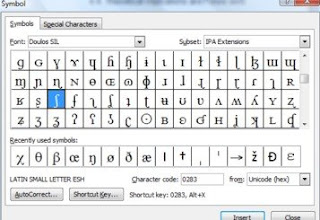
Persijn M. de Rijken, a student at the University of Bergen, writes
In your dictionary, words such as "bed" are transcribed with an [e], when elsewhere I often see the same vowel rendered as [ɛ]. Also, when I listen to various vowel recordings I find that [ɛ] comes closer to the sound I make when I say "bed". Of course, I am not a native speaker of English, and it may well be my Dutch or Norwegian that is creeping in, but I was wondering as to the nature of your choice for using [e]?
This is a question quite often asked. Indeed, when I recently met the famous linguist David Stampe for the first time, he upbraided my notation system on similar grounds. Because the DRESS vowel is lax, not tense, he says, it ought to be written
ɛ, not
e.

You can see a brief treatment of this issue at the end of
this short article.
Here is a somewhat longer analysis of the problem. I’ll do it in two parts, one today and the other tomorrow.
1. Although I usually use
e for the English vowel of DRESS, there is nothing incorrect or unscientific about using
ɛ instead. This is the symbol used in the Kenyon-Knott system, still in use among American dialectologists and speech people (who just call this notation “IPA”), and also for EFL in Taiwan (but as far as I know, virtually only in Taiwan). Ladefoged used it in earlier editions of his
Course in Phonetics, before switching to
e. Clive Upton uses it in the ODP and in his transcriptions for the OED and the Concise Oxford, though the Oxford ALD remains faithful to
e. The fact that different people use different notations does
not imply any difference in the sound that we symbolize.
2. An important principle of good phonetic transcription is simplicity. As Ladefoged formulates it,
A simple phonemic transcription uses the smallest possible number of different letters. [D. Abercrombie, 1964, English Phonetic Texts, London: Faber & Faber, page 19.]
Since the DRESS vowel can be unambiguously written
e, an English transcription with the symbol
e is simpler than one with
ɛ. The same applies in those languages that have just five vowels (or just five peripheral vowels), e.g. Modern Greek, Serbian, Polish, Czech, Japanese. In these languages the mid front vowel is best, and most simply, written
e. Whether its quality is closer to that of cardinal 2 [
e] or cardinal 3 [
ɛ] is irrelevant. On the other hand, in languages that have a close-mid front vowel in contrast to an open-mid one (e.g. French, German, a Scottish accent of English), the two symbols
e and
ɛ must both be used; and that means
ɛ for French
même, German
Bett, and Scottish
dress.
There is not some great phoneme system in the sky from which particular languages select their phonemes, with one IPA symbol always standing for the same thing. Languages differ. We use the symbol
t for the aspirated alveolar plosive of English and the unaspirated dental plosive of Russian because it is simpler to do so. We use the same symbol
l for the clear alveolar lateral of German, the variably-coloured alveolar lateral of English, and the retracted post-alveolar lateral of Korean (yesterday’s blog), because it is simpler to do that than to festoon the transcription with diacritics. It is better to state such information in the conventions that accompany a phonetic transcription rather than in the transcription itself. In a language that distinguishes dental and alveolar (or postalveolar) sounds, we obviously need to symbolize their place of articulation explicitly. In a language that doesn’t, we don’t.
For points 3, 4, and 5 please wait until tomorrow.



















